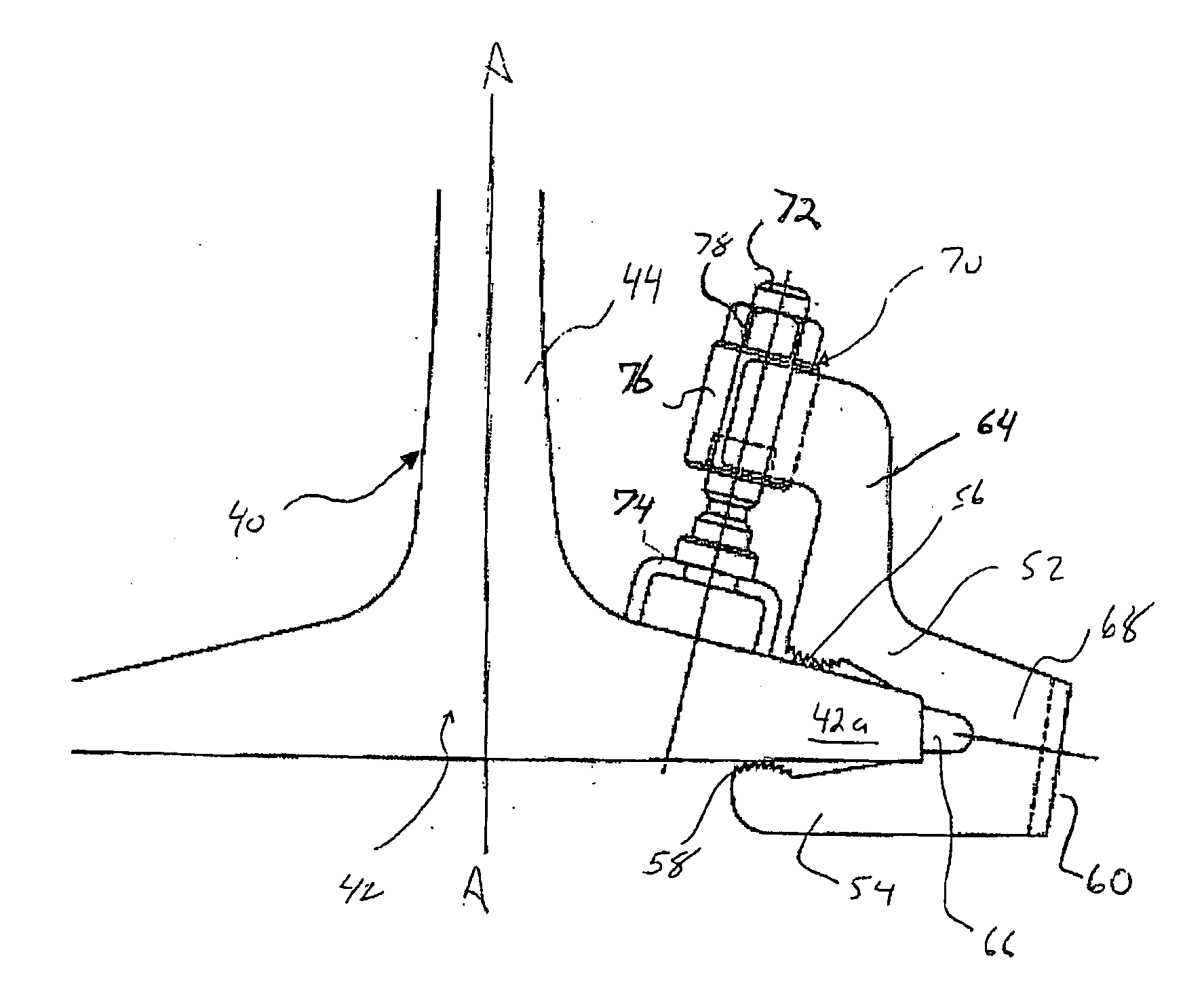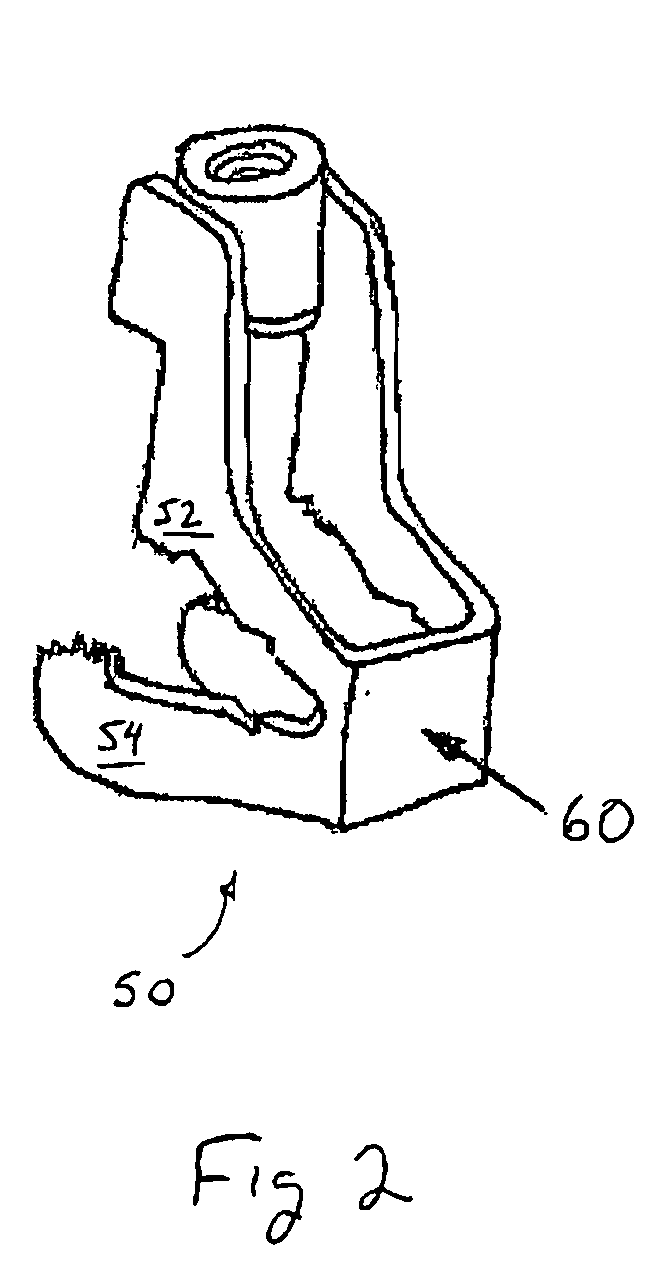Non-invasive railroad attachment mechanism
a technology of attachment mechanism and non-invasive rail, which is applied in the direction of connection contact member material, rail device, way, etc., can solve the problems of brittleness in the track rail, stress concentration within the track rail, and laborious interconnection techniques, so as to facilitate the biasing of the bias force member, facilitate the biasing, and enhance the compressive force
- Summary
- Abstract
- Description
- Claims
- Application Information
AI Technical Summary
Benefits of technology
Problems solved by technology
Method used
Image
Examples
Embodiment Construction
[0037] The present invention is directed to various anchoring / clamping mechanisms that permit non-invasively holding a component relative to the surface of a railroad track rail. The anchoring mechanisms are operable to hold a variety of different components relative to the surface of such track rails. However, in the following description the invention is set forth primarily in the context of non-invasively holding a heater element and / or a signal line / conductor relative to the surface of a track rail. It will be appreciated, however, that certain aspects of the invention are not limited to such applications.
[0038] Referring to FIG. 1, a railroad track switch is generally identified by the reference numeral 10. The track switch 10 is used, for example, to switch train traffic between first 12 and second 14 tracks. Generally, the switch 10 includes a pair of fixed rails 16 and 22 and a pair of switching rails 18 and 20.
[0039] The switching rails 18 and 20 are positioned on the gau...
PUM
 Login to View More
Login to View More Abstract
Description
Claims
Application Information
 Login to View More
Login to View More - R&D
- Intellectual Property
- Life Sciences
- Materials
- Tech Scout
- Unparalleled Data Quality
- Higher Quality Content
- 60% Fewer Hallucinations
Browse by: Latest US Patents, China's latest patents, Technical Efficacy Thesaurus, Application Domain, Technology Topic, Popular Technical Reports.
© 2025 PatSnap. All rights reserved.Legal|Privacy policy|Modern Slavery Act Transparency Statement|Sitemap|About US| Contact US: help@patsnap.com



